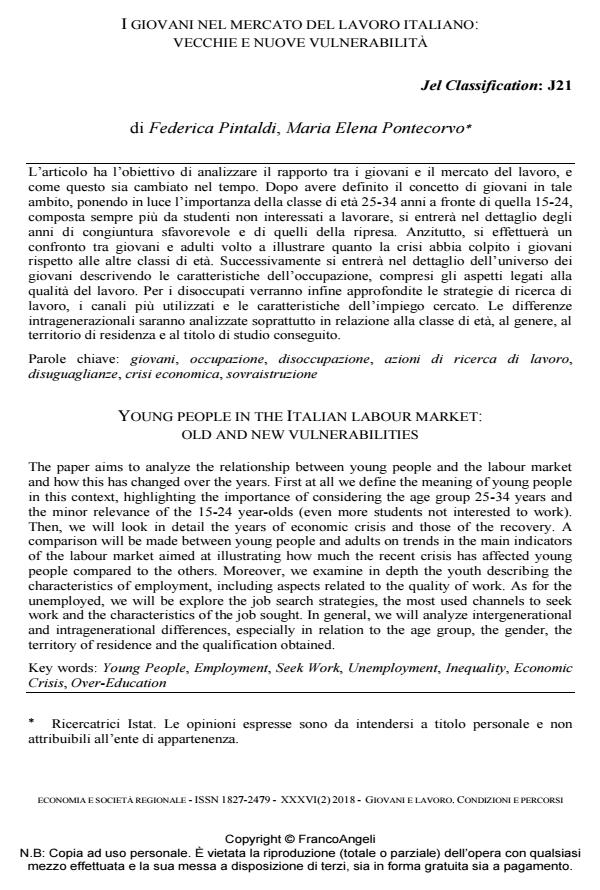Young people in the italian labour market: old and new vulnerabilities
Journal title ECONOMIA E SOCIETÀ REGIONALE
Author/s Federica Pintaldi, Maria Elena Pontecorvo
Publishing Year 2018 Issue 2018/2
Language Italian Pages 21 P. 20-40 File size 605 KB
DOI 10.3280/ES2018-002002
DOI is like a bar code for intellectual property: to have more infomation
click here
Below, you can see the article first page
If you want to buy this article in PDF format, you can do it, following the instructions to buy download credits

FrancoAngeli is member of Publishers International Linking Association, Inc (PILA), a not-for-profit association which run the CrossRef service enabling links to and from online scholarly content.
The paper aims to analyze the relationship between young people and the labour market and how this has changed over the years. First at all we define the meaning of young people in this context, highlighting the importance of considering the age group 25-34 years and the minor relevance of the 15-24 year-olds (even more students not interested to work). Then, we will look in detail the years of economic crisis and those of the recovery. A comparison will be made between young people and adults on trends in the main indicators of the labour market aimed at illustrating how much the recent crisis has affected young people compared to the others. Moreover, we examine in depth the youth describing the characteristics of employment, including aspects related to the quality of work. As for the unemployed, we will be explore the job search strategies, the most used channels to seek work and the characteristics of the job sought. In general, we will analyze intergenerational and intragenerational differences, especially in relation to the age group, the gender, the territory of residence and the qualification obtained.
Keywords: Young People, Employment, Seek Work, Unemployment, Inequality, Economic Crisis, Over-Education
Jel codes: J21
- Giovani, background migratorio e ingresso nel mercato del lavoro regionale Ilaria Rocco, Davide Girardi, in ECONOMIA E SOCIETÀ REGIONALE 1/2024 pp.87
DOI: 10.3280/ES2024-001007 - L'inclusione lavorativa dei rifugiati fuori dall'accoglienza: snodi, risorse e ambivalenze Giulia Storato, in ECONOMIA E SOCIETÀ REGIONALE 1/2024 pp.123
DOI: 10.3280/ES2024-001010
Federica Pintaldi, Maria Elena Pontecorvo, I giovani nel mercato del lavoro italiano: vecchie e nuove vulnerabilità in "ECONOMIA E SOCIETÀ REGIONALE " 2/2018, pp 20-40, DOI: 10.3280/ES2018-002002